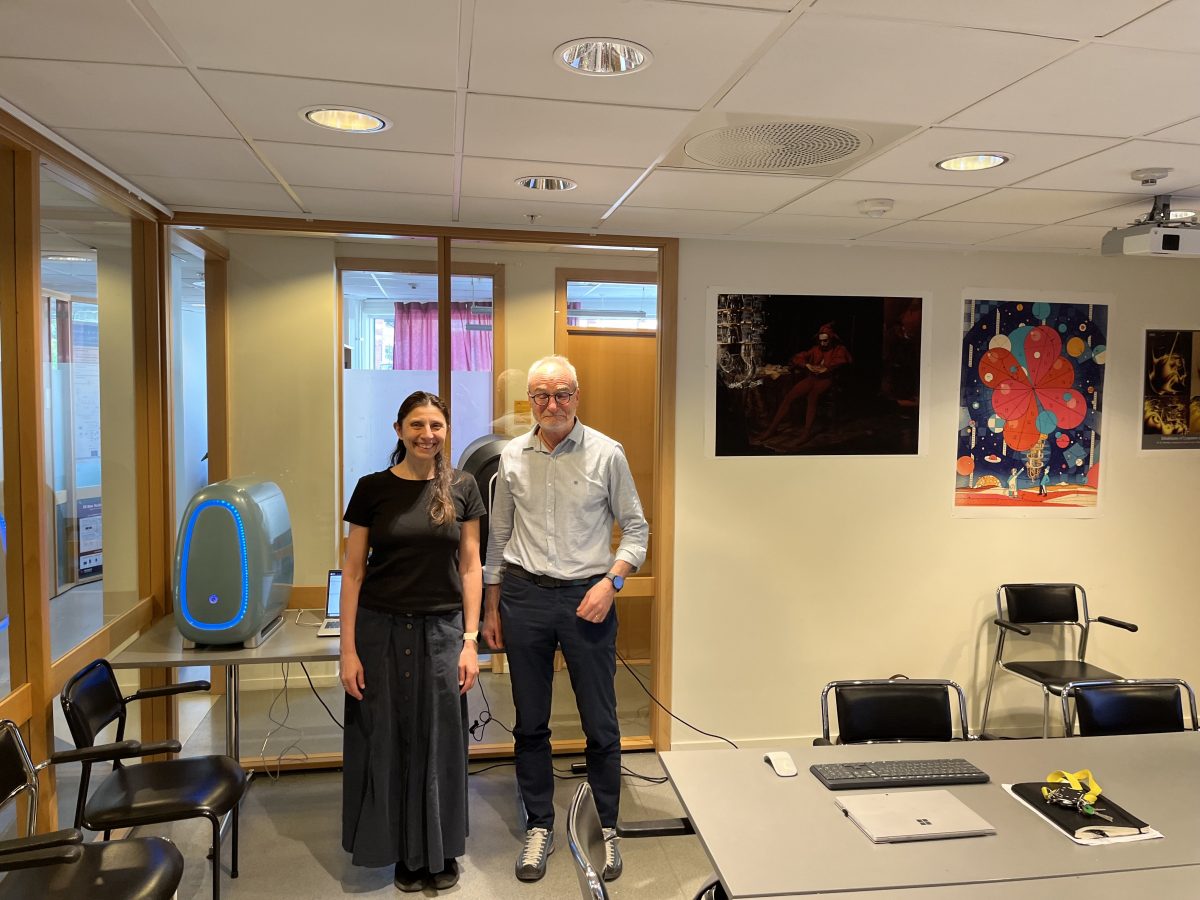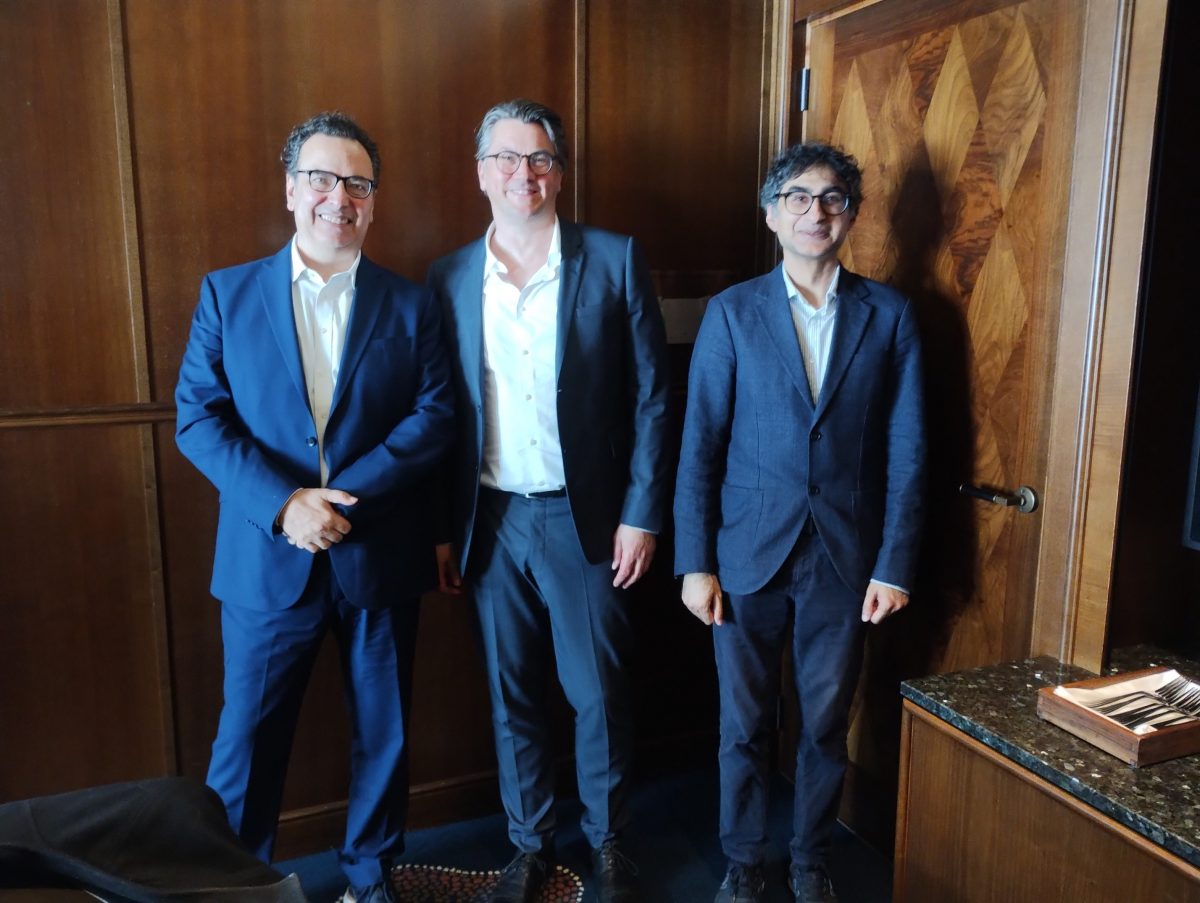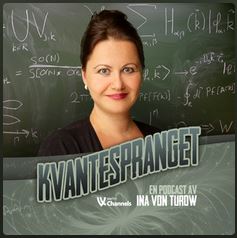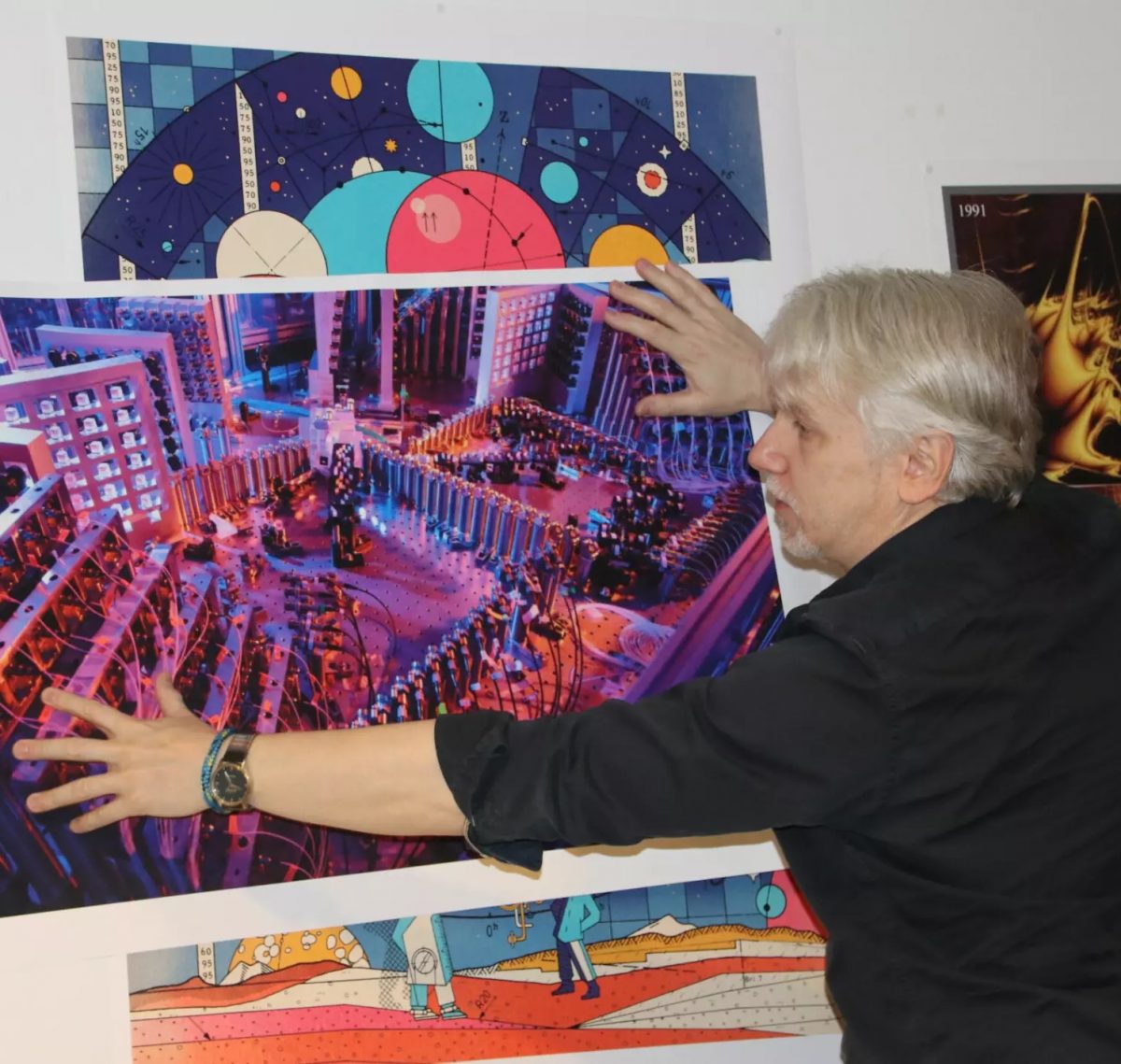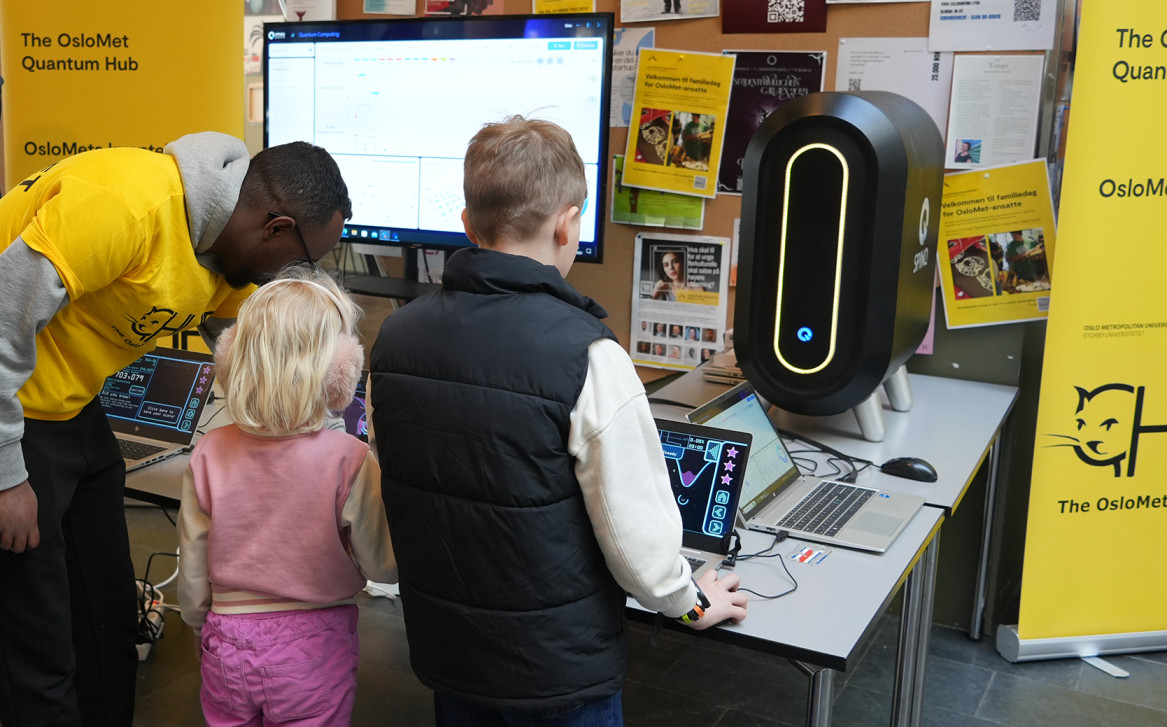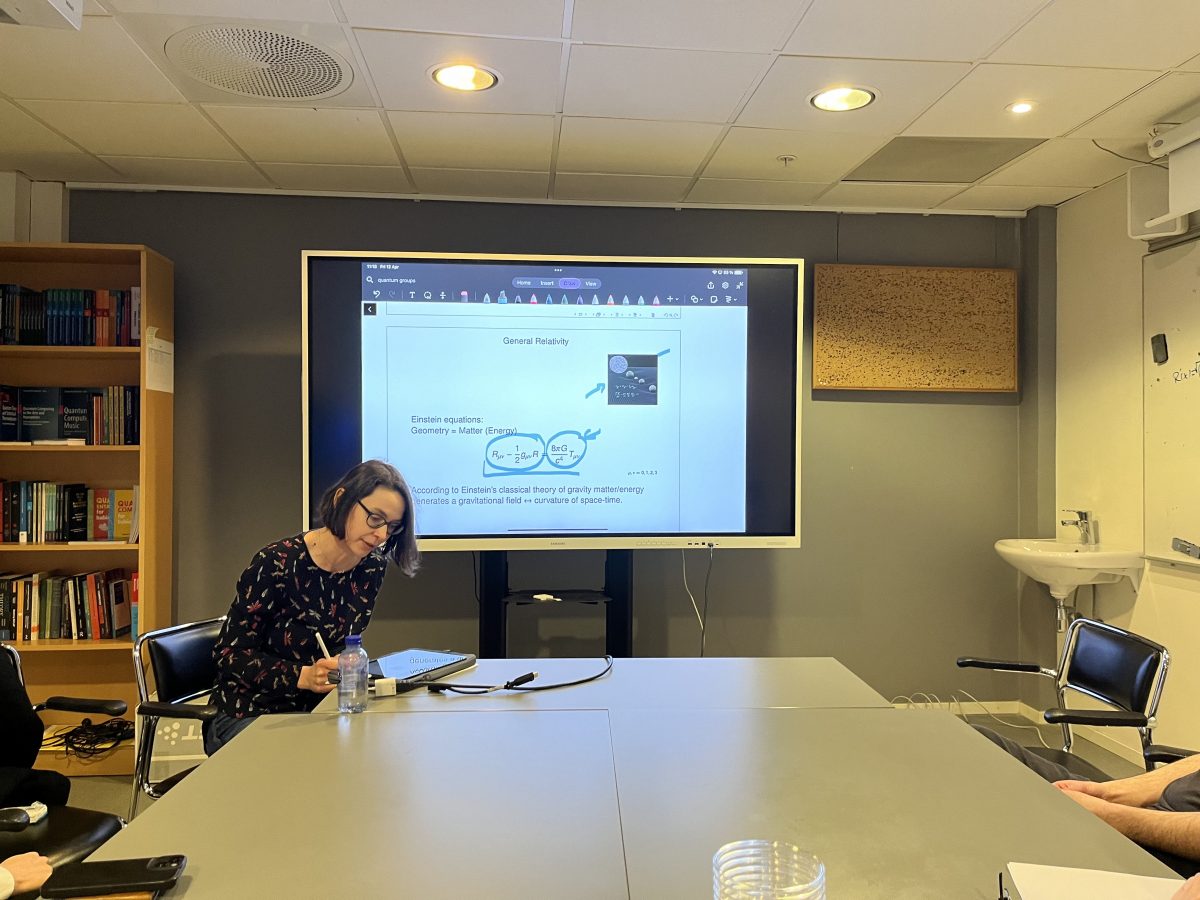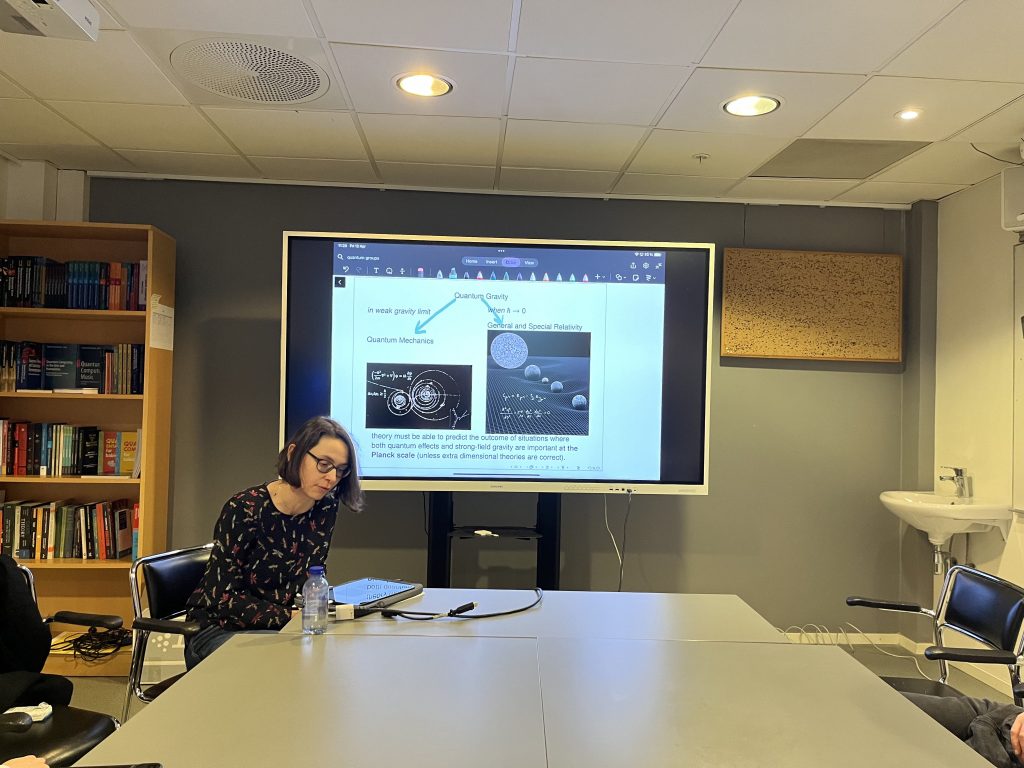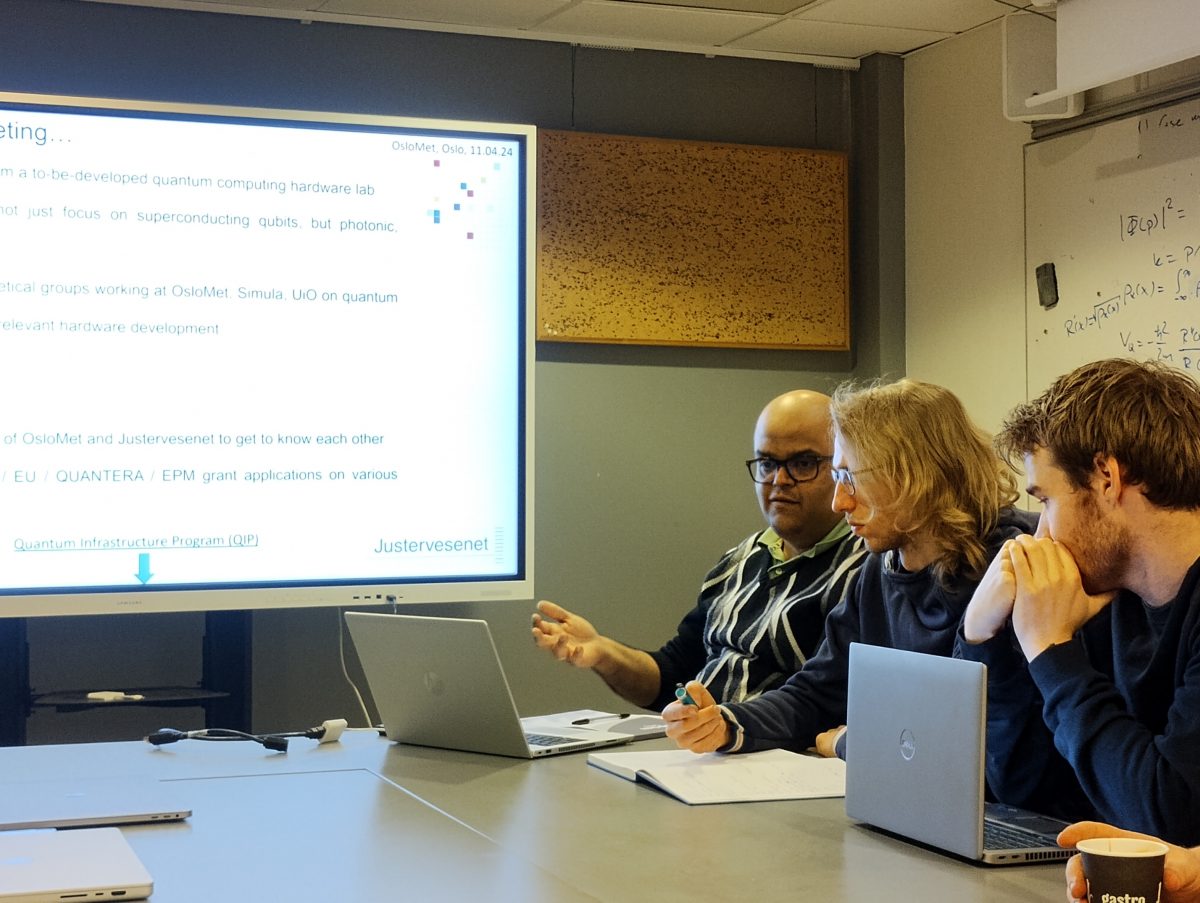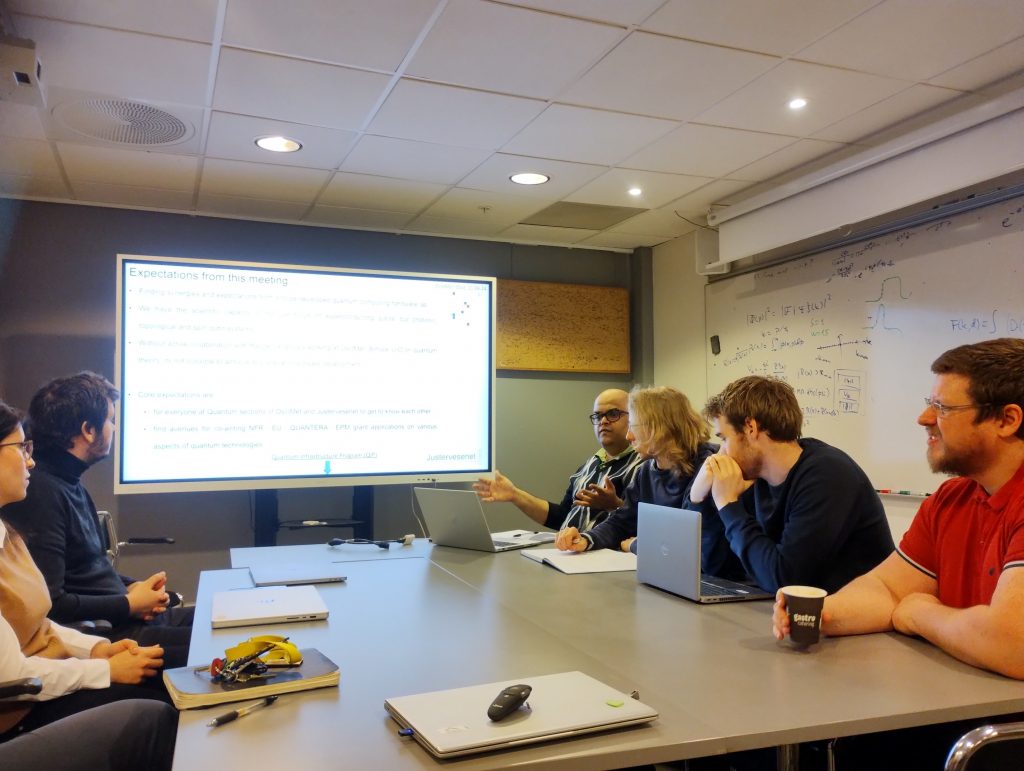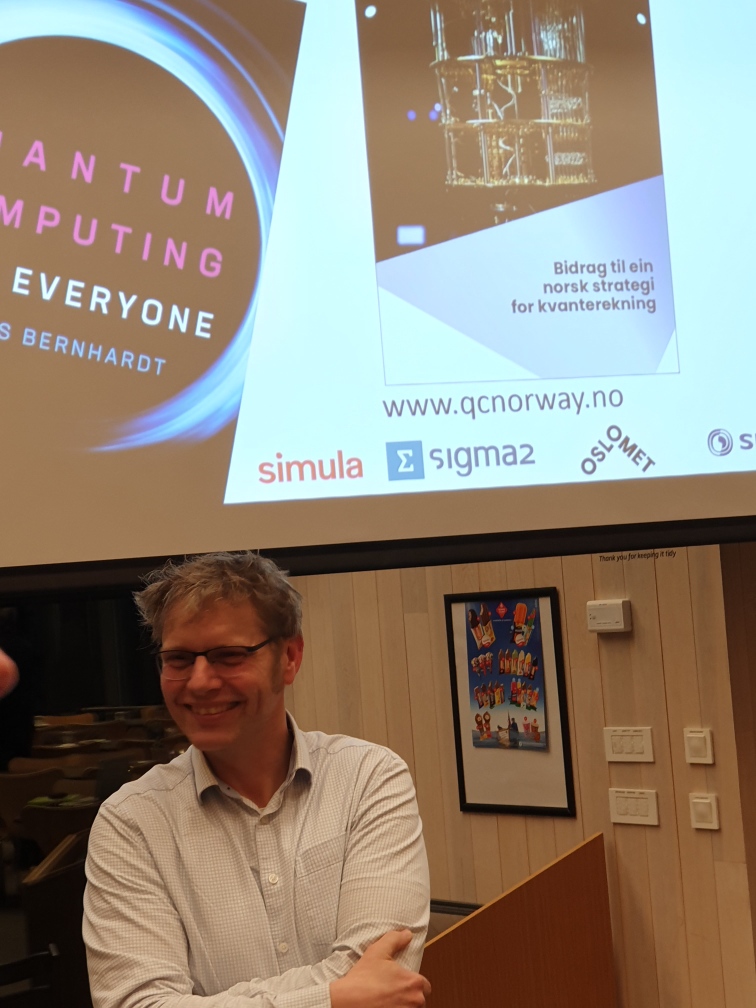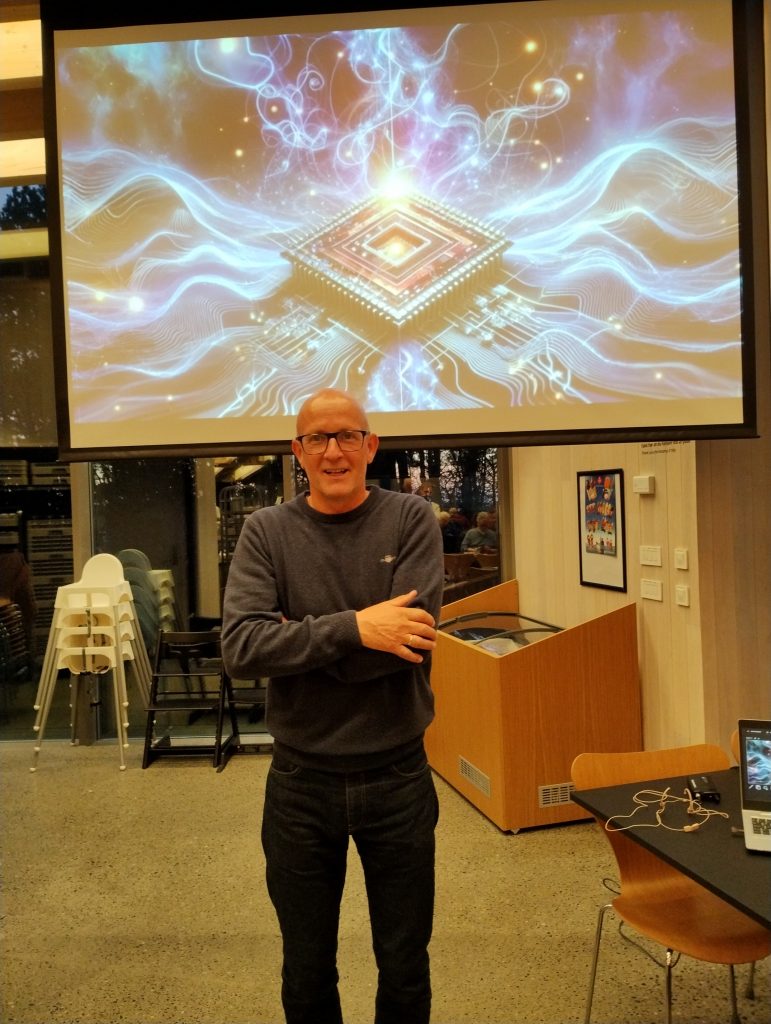Last Tuesday, GoForIT hosted their annual conference. This year’s topic was AI, geopolitics & twin transition. It was a pleasure to see that the quantum agenda was included too. Clearly, Mali Hole Skogen, Technology and sustainability director ICT-Norway and the head of GoForIT, had not forgotten that she was there when Norway went quantum a couple of years ago.
There are good reasons for arguing that quantum technology will play a key role in the twin transition – the combined digital and green transition, which is anticipated by many. Therefore, it was with great enthusiasm we noticed that the program featured Alessandro Curioni, the director IBM Research in Zurich. You see him in to the left in the above picture – with the Norwegian IBM quantum ambassador Lars Nordbryhn to his left, and our own Shuakat Ali to the left of him.
A packed, attentive and tech-optimistic audience at the Sommero Hotel was explained how emerging quantum technology may change the world. The audience featured IT experts and management from both businesses and academia – in addition to politicians.
Afterwards, we also got to share some ideas with Alessandro on how to bring about quantum awareness in Norway.
